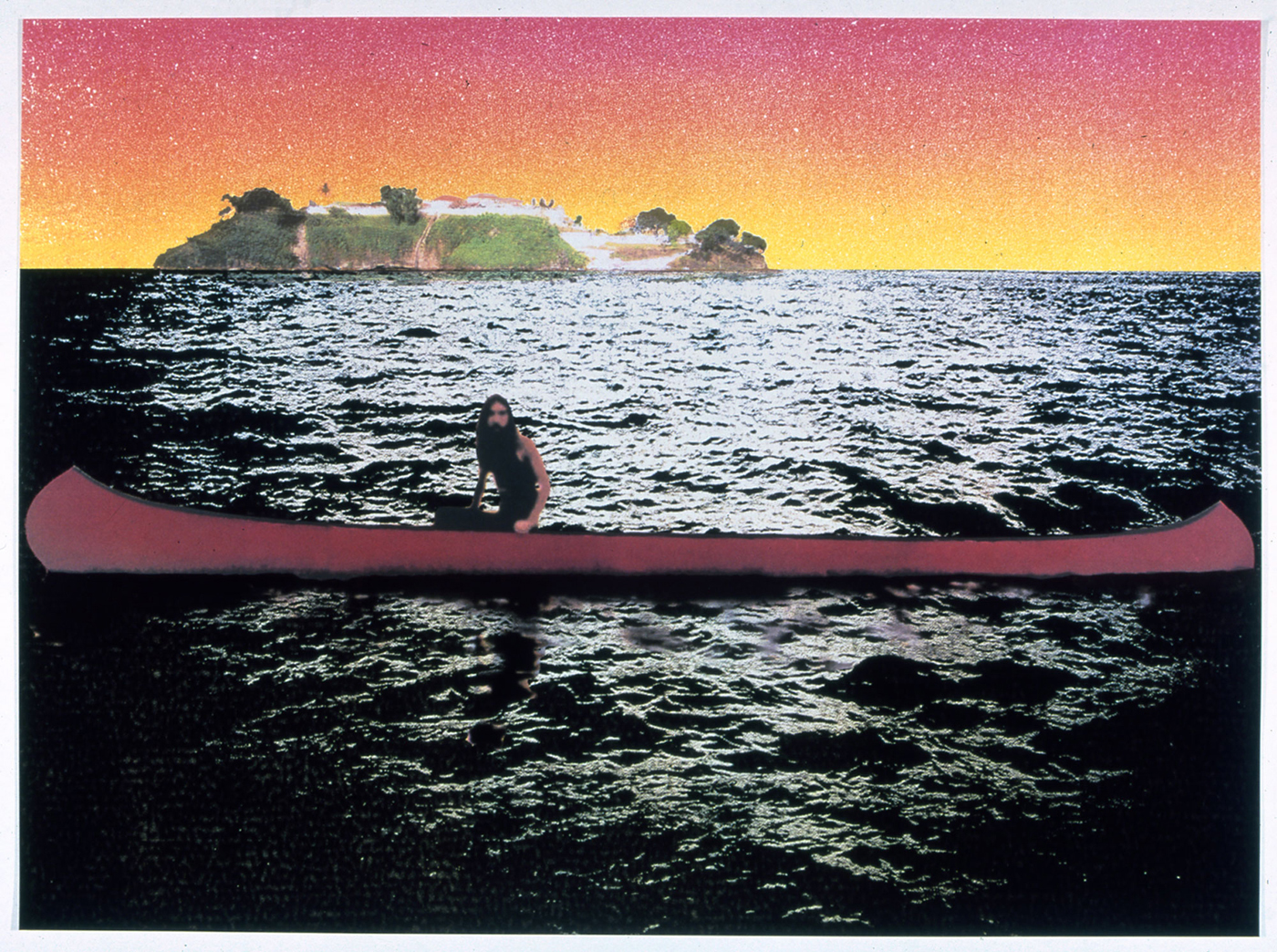Peter Doig
Canoe - Island (2000)
Edition of 300
12 colour Silkscreen printed on 300 gsm Somerset Tub Sized paper. Produced by Coriander Studios, London.
75 x 100 cm (30 x 40 in)
Signed, numbered and dated by the artist.
$7,200
Free UK Shipping
Delivery & Returns
US (3-5 days): typically $60 - $100
EU (3-5 days): typically $50 - $125
Standard UK (3-5 days): FREE
Shipping rate will be calculated at the checkout once you have entered your shipping address.
We use UPS to ship your order. This is a fully trackable secure service which requires a signature on delivery.
Prints will be flat packed in our specially designed packaging.
The solitary figure is a familiar sight in Doig's work, whether walking amidst the blur of a snowstorm; sprawled out in tall grass, looking skyward; or standing at the lapping edges of a riverbank. Single cars also appear alone, as do buildings such as a Corbusier high-rise set deep in overgrown woods, or a wooden farmer's shack stranded in a sparse landscape. Though pastoral in setting, Doig's world is consistently enveloped with a sense of a disturbing undertow, like dark fronds that lie otherwise unseen in a deep lake. In Doig's work, however, they rise to the surface, like troubled dreams that refuse to be forgotten. For his Counter Editions print Canoe - Island (2000), a familiar Doig motif reappears - the lone canoeist - here set adrift in a wide ocean under a psychotropic, sunset sky. In the sea behind stand the ruins of an abandoned prison. On his solitary journey, this bearded castaway's fate is as unknown as the lives of those men stranded on their tropical prison isle.
Peter Doig's paintings have a tendency to disorientate us, even when they depict recognisable imagery such as figures and buildings. He invites us to consider the status of the people, places and events that populate his pictures, whether they exist in private or public realms, in personal or shared experiences. The refuges and defences against nature often seen in Doig's work are a kind of visual corollary for such considerations. We might also see in them an artist measuring the gaps between thought and language, painting as an individual pursuit and a shared experience.




